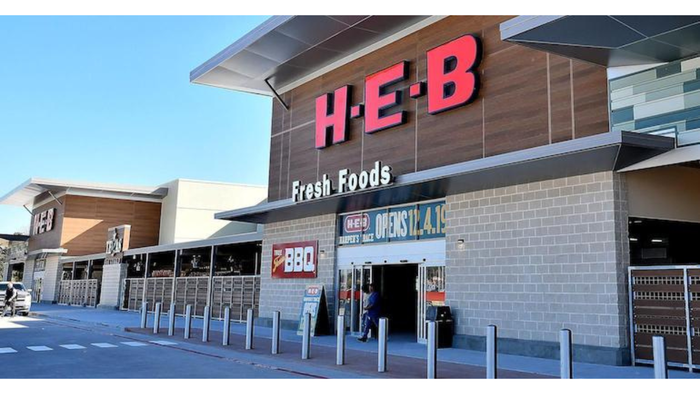Shining examples
January 1, 2018
Improvements to LED and traditional lighting are providing retailers with a wealth of options. By Kim Ann Zimmermann A customer will become aware of the lighting level in the store when it is out of the norm, but most often lighting goes unnoticed while playing an important supporting role in directing attention to high-value products and departments. Industry observers say that supermarket executives have historically left decisions about lighting to the executives in charge of operations. But now the marketing department is weighing in the placement and types of lighting used throughout the store. “I think one mistake that many owners make is to underestimate the impact lighting has on the atmosphere and ultimate success of their store,” says Lee Rhoades, director of sales and marketing for St. Louis-based Baero North America, Inc. “Sometimes, the idea is if a retailer sells products cheap enough the lighting won’t matter. That might be true for some retail models, but when you are in a market with intense competition, you need to find ways to set your store not only apart from the competition but above the competition in terms of service and appearance.” Newer lighting technologies such as LED are making their way into frozen and refrigerated cases, store shelves and point-of-purchase displays. Experts note that efficiencies and color rendering capabilities of LEDs are constantly improving as prices are coming down. Even the parking lot lights are getting an upgrade to reduce energy and maintenance costs. “We’re seeing demand for LEDs in areas that were previously unobtainable, such as overall store lighting and lighting for safety and security, such as parking lot lighting,” says Bryan Warner, vice president of ElectraLED. “The appetite has been increasing at a more rapid pace, and I believe we’ll reach expectations in the next few years.” He also says that retailers have become more aggressive with implementing technologies such as energy management controls to reduce wattage during low-traffic times as well as daylight harvesting and solar technology. Manufacturers of traditional fluorescent and ceramic metal halide lighting systems are also tweaking their offerings to keep them competitive with LED alternatives. “I think we are going to see some large leaps ahead with ceramic metal halide in terms of color and quality,” Rhoades says. Eliminating waste Whatever lighting technology retailers choose, observers note that grocers are focused on reducing lighting waste—meaning that they want lighting sufficient to the task with a low cost per lumen. “We are really seeing customers taking great care to ensure that lights are in the right places so they are making the most efficient use of their investment,” says Paul Kelly, vice president of business development for Nualight. The company, which is based in Cork, Ireland, has U.S. offices in Charlotte, N.C. LED technology allows lighting to get closer to the product without causing spoilage, he says, as the lights don not emit heat. In addition, he says there is a trend toward miniaturization, so lights can be used discreetly in areas such as refrigerated and frozen cases. Kelly says he sees retailers taking more control of their lighting design. “They want to individualize their stores, and one way to do that is through lighting,” he says. Tallying total cost As retailers have a laser-like focus on making their lighting investments count, maintenance and reliability are top concerns. Observers note that even relamping a few fixtures can blow the budget. Earlier this year, Fairfield, N.J.-based Amerlux, LLC announced a 10-year warranty on its LED lighting fixtures, a move that company executives call an industry first. “With some lighting options, maintenance and outages can become concerns,” says Don Knickerbocker, vice president of supermarket sales for Amerlux. “LED has a very long life, and the brightness is consistent for the life of the fixture.” He says LED technology has increased by 25% over the past few years while prices have come down. Amerlux officials say the company offers extensive warranties due to an ongoing commitment to manufacturing using only the highest quality, best performing LEDs and drivers. Knickerbocker says the company is also dedicated to superior thermal design and quality control. “When LEDs started taking off, there was a lot of low-cost product available, but the quality was not there, which was a cause for concern.” Terry Roberts, president of Merchandising By Design, Inc./The Design Associates LLC, a lighting design firm based in Carrollton, Texas, says retailers are looking for lighting consistency. “Retailers and designers pay careful attention to how lighting affects the brand image,” she says. “With LED, the lighting remains constant, while other types of lighting degrades from the first day it is installed.”? Taking it outside As many retailers tackle lighting issues in the store, one of the next frontiers will be the parking lot, according to industry observers. “We’re seeing a lot of interest in LEDs for parking lot lighting and security lighting,” says Bryan Beatenbough, president of Anderson, S.C.-based EfficientLights, a division of PowerSecure, based in Wake Forest, N.C. “There will be a ton of new products coming out over the next few years and soon there won’t be an area of the supermarket that we can’t touch with LED.”
About the Author
You May Also Like



.png?width=700&auto=webp&quality=80&disable=upscale)
